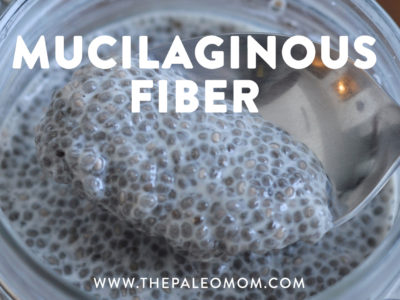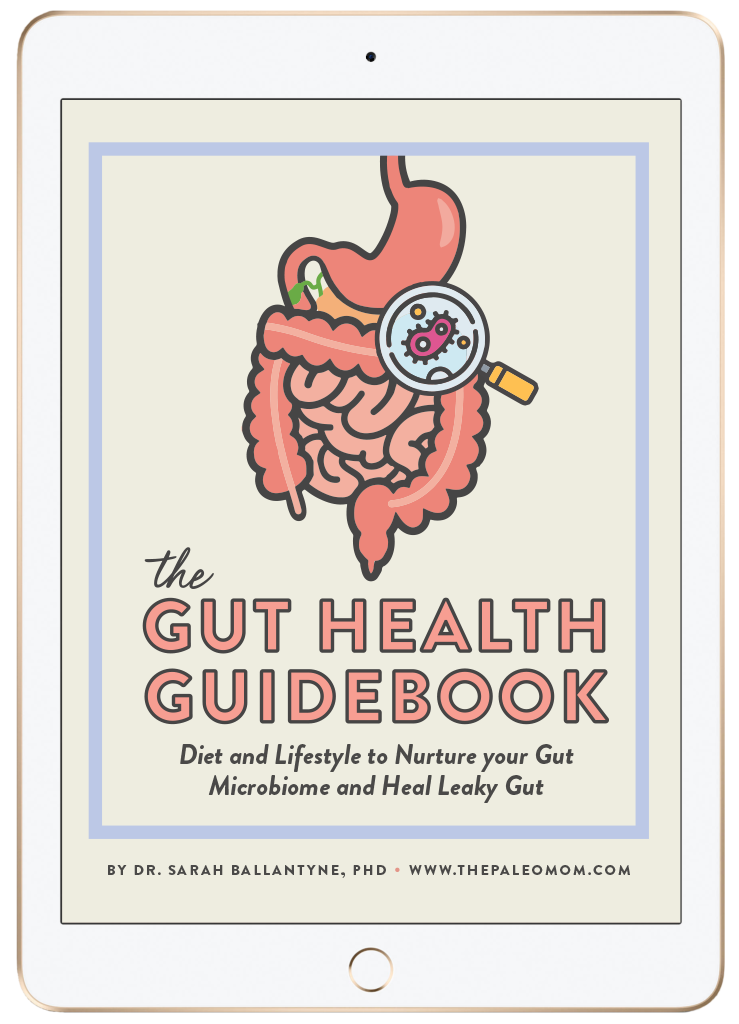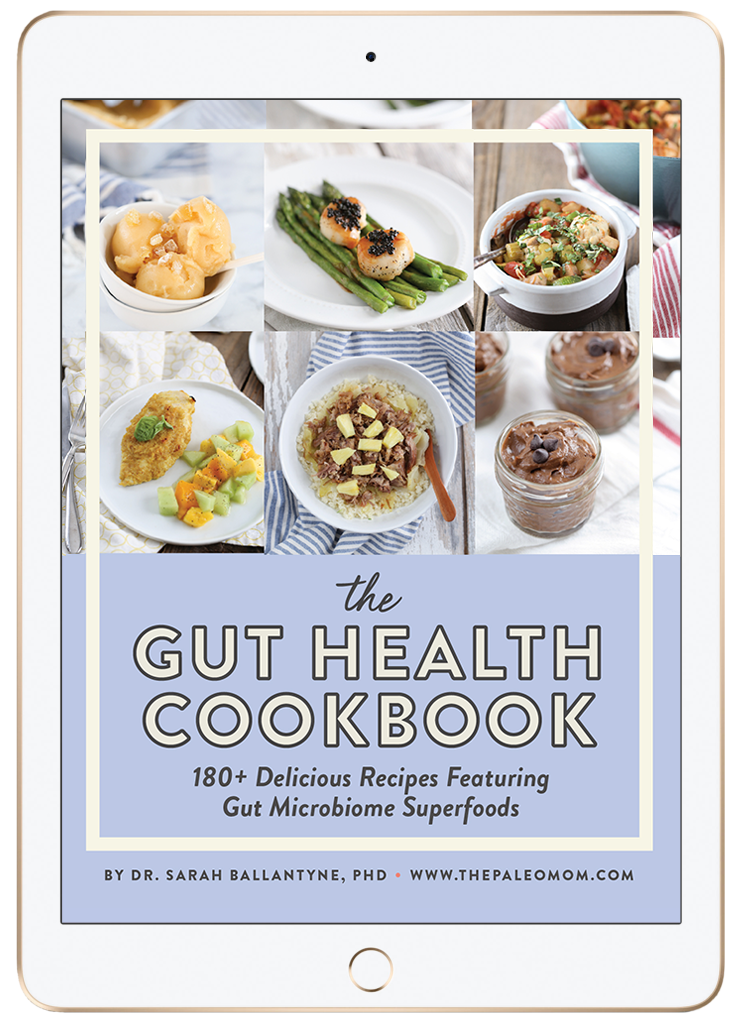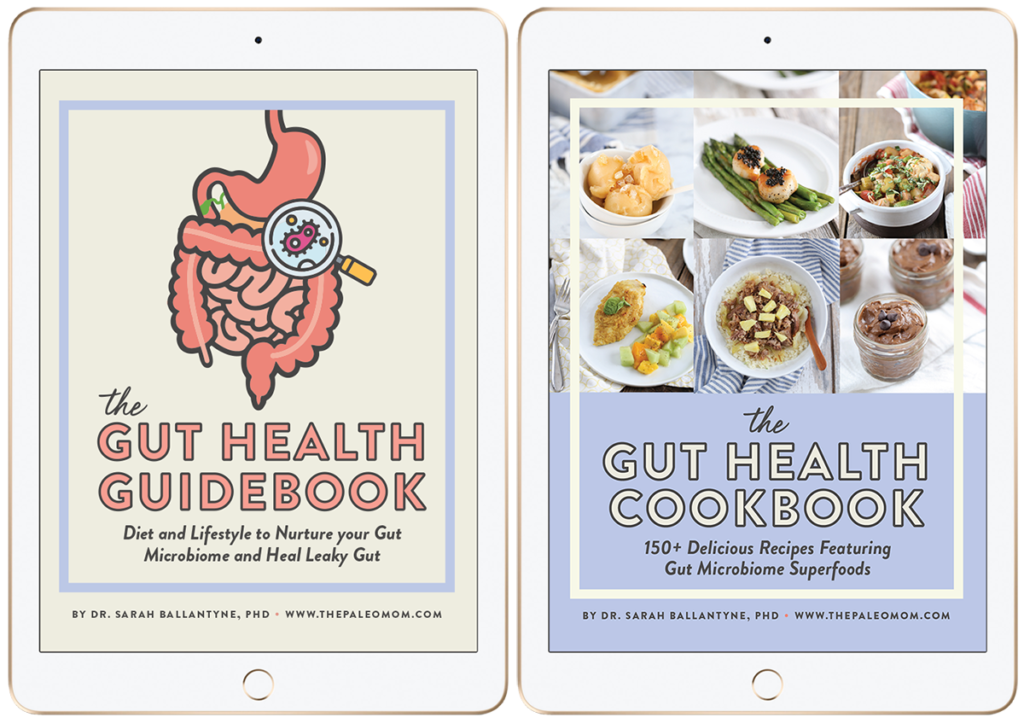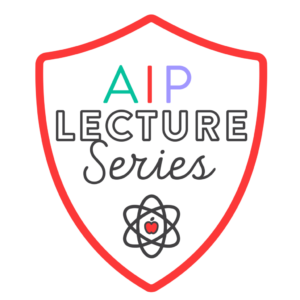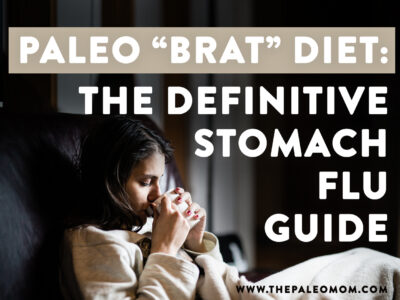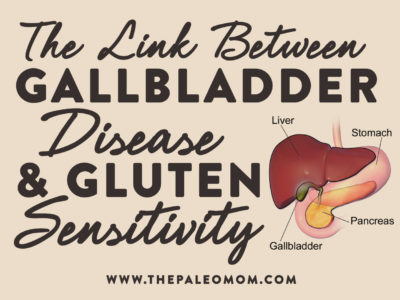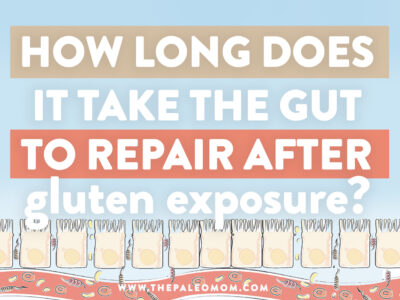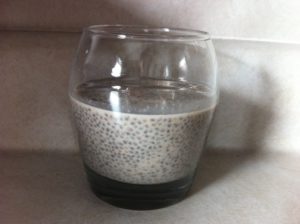 You might not know what mucilage is just by the name, but chances are, you’ve seen it in action! Chia seeds, flaxseeds, and agar agar all contain a type of vicious, soluble fiber called mucilage that swells up and becomes gelatinous and gooey when it makes contact with water. Many Paleo recipes call for high-mucilage foods to create certain jelly-like textures (think chia seed pudding, for example!). And, the unique properties of this fiber have resulted in mucilaginous foods being touted for their health benefits, especially when it comes to healing gut conditions.
You might not know what mucilage is just by the name, but chances are, you’ve seen it in action! Chia seeds, flaxseeds, and agar agar all contain a type of vicious, soluble fiber called mucilage that swells up and becomes gelatinous and gooey when it makes contact with water. Many Paleo recipes call for high-mucilage foods to create certain jelly-like textures (think chia seed pudding, for example!). And, the unique properties of this fiber have resulted in mucilaginous foods being touted for their health benefits, especially when it comes to healing gut conditions.
Table of Contents[Hide][Show]
It’s true that fiber does some amazing things for or bodies (you can read more about that in my multi-part Fiber Manifesto here, here, here, here, and here!), and mucilaginous fiber is no exception. But, there are some situations where mucilage may actually aggravate certain health problems and be worth avoiding (at least temporarily!). Understanding the wide spectrum of health effects from this fiber can help us decide how much of it to incorporate into our diets!
All About Mucilage
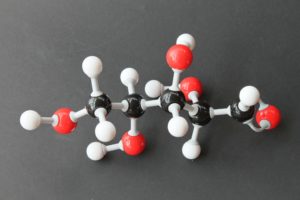 On a molecular level, mucilage is rich in simple sugars such as xylose, arabinose, rhamnose, galactose, glucose, and sometimes mannose and fucose. (Different sources of mucilage—like leaves vs. roots vs. seeds—have different simple sugar compositions, but typically, these are the sugars that dominate!) For plants, mucilage comes in pretty handy. It can help barricade injuries from pathogens by forming a gelatinous layer on the wound site, helps plants develop a relationship with soil-dwelling life forms like fungus, serves as a barometer to check water loss, aids in germination, and helps facilitate seed dispersal.
On a molecular level, mucilage is rich in simple sugars such as xylose, arabinose, rhamnose, galactose, glucose, and sometimes mannose and fucose. (Different sources of mucilage—like leaves vs. roots vs. seeds—have different simple sugar compositions, but typically, these are the sugars that dominate!) For plants, mucilage comes in pretty handy. It can help barricade injuries from pathogens by forming a gelatinous layer on the wound site, helps plants develop a relationship with soil-dwelling life forms like fungus, serves as a barometer to check water loss, aids in germination, and helps facilitate seed dispersal.
Nearly all plants produce some amount of mucilage, but a few plants are extremely rich in this fiber! The most mucilaginous plants tend to be succulents (like aloe) and cacti, some types of seaweed, certain seeds, and roots. More specifically, the highest-mucilage foods are:
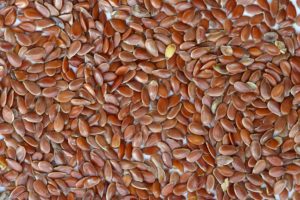 Flaxseeds
Flaxseeds- Chia seeds
- Psyllium
- Aloe vera
- Kelp
- Okra
- Figs
- Agar agar (algae)
- Cactus pads (AKA nopales—a great wild edible!)
- Fenugreek
- Marshmallow root (the stuff traditionally used to make marshmallows!)
- Slippery elm
- Licorice root
- Plantain
- Cassava
- Fermented soybeans, natto (although soybeans aren’t inherently rich in mucilage, mucilage is produced by bacteria during the fermentation process for natto)
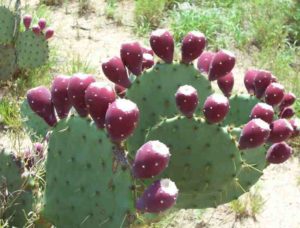
(Keep in mind, the mucilage in plant foods is not the same substance that causes bone broth to become jiggly in the fridge! That honor goes to the gelatin, the water-soluble protein derived from cartilage in bones, tendons, and other animal tissues.)
The Good
Mucilage has been long been praised for its role in human health, and rightfully so! Tons of research points to beneficial and therapeutic activity for this unique fiber. Mucilage from cactus pads, for example, has been shown to act as a prebiotic, enhancing the growth of lactobacilli, increasing short-chain fatty acid production, and reducing the population of harmful species of enterococci, enterobacteria, staphylococci, and clostridia. Mucilage-rich psyllium is often used to stimulate normal bowel function and absorb excess water (making it useful for both constipation and mild diarrhea). Some mucilage-rich herbs can suppress the blood sugar response to a glucose meal, due to a delay in glucose absorption from the intestinal membrane. And, the addition of mucilage to a calorie-reduced diet has been shown to cause greater weight loss and greater reductions in triglyceride and total cholesterol levels than diet alone (possibly due to reduced intestinal absorption of bile acids).
Not surprisingly, mucilaginous extracts have been used medicinally for a variety of purposes. However, many of them operate as immune modulators or stimulators, which brings us to…
The Bad
Although the immune-stimulating effects of mucilage may be beneficial in some contexts, in other cases, this can actually be detrimental!
For instance, some types of mucilage specifically stimulate either the Th1 immune response (like flaxseed) or the Th2 immune response (like the mucilage in natto, or fermented soybeans). If someone has an autoimmune disease and is already Th1 or Th2 dominant (see The Paleo Approach), stimulating the wrong pathway can aggravate the Th1/Th2 imbalance instead of helping to correct it, resulting in a worsening of autoimmune symptoms. Plus, regulating the immune system is far more complex than simply stimulating the more suppressed pathway, as used to be standard in Th1/Th2 balancing protocols, now thoroughly debunked.
If you have an immune system that is not regulating itself well, as is the case in all autoimmune diseases but also any chronic illness since inflammation is a consequence of an immune system that isn’t modulating itself properly, then stimulating inflammatory immune pathways is not likely to do you any favors. When it comes to mucilage, individual responses are likely to vary greatly since the composition of your gut microbiome, exactly how your immune system is dysregulated, nutrient status, stress level, sleep debt, and exactly how much you eat of which mucilage are all inputs into the equation.
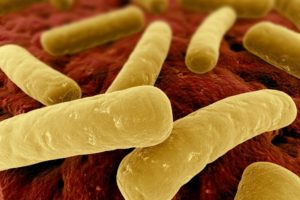 And, mucilage can potentially be harmful in other ways as well. Although mucilage is only partially degraded by gut microbes, when it does become hydrolyzed in our intestines, its simple sugars get liberated and become potential food for bacteria—and not just the beneficial strains! A number of pathogenic microbes can chow down on the xylose, arabinose, rhamnose, galactose, glucose, mannose, and/or fucose contained in mucilage, especially if the gut is already compromised. Some of those bacteria species include:
And, mucilage can potentially be harmful in other ways as well. Although mucilage is only partially degraded by gut microbes, when it does become hydrolyzed in our intestines, its simple sugars get liberated and become potential food for bacteria—and not just the beneficial strains! A number of pathogenic microbes can chow down on the xylose, arabinose, rhamnose, galactose, glucose, mannose, and/or fucose contained in mucilage, especially if the gut is already compromised. Some of those bacteria species include:
- Clostridium difficile, which can eat the galactose, mannose, and glucose liberated from mucilage. When imbalanced, it can cause Clostridium difficile colitis, a severe infection that can range from diarrhea to potentially deadly colon inflammation (and even a hole forming in the intestines!).
- Escherichia coli (E. coli), which can eat the glucose, arabinose, and xylose liberated from mucilage. Certain strains of coli are famous for causing foodborne illness due to producing a toxin called Shiga toxin, which can lead to vomiting, fever, severe stomach cramps, and bloody diarrhea. About 5-10% of people with this type of E. coli infection develop hemolytic uremic syndrome (HUS), which can potentially be life-threatening.
- Staphylococcus aureus, which can eat the galactose liberated from mucilage. This is a major opportunistic pathogen that produces a variety of toxins (both enterotoxins and cytotoxins) and can cause nausea, vomiting, diarrhea, cramps, fever, and loss of appetite. And, it can alter the overall structure of the gut microbiome and reduce the production of beneficial short-chain fatty acids (SCFAs).
And that’s just to name a few!
Basically, what this means is that for certain forms of gut dysbiosis, mucilage might actually feed the wrong bacteria and consequently worsen gut health instead of improving it. For example, someone with an overgrowth of C. difficile (and an under-abundance of beneficial resident bacteria to compete with it!) might find that mucilage encourages the C. difficile to flourish and cause infection. This could especially be an issue after a hospital visit or long-term antibiotic treatment that kills of intestinal bacteria that usually keep C. difficile in check.
There’s no evidence that eating a diet rich in mucilages can cause gut dysbiosis if you’re starting out with a healthy diverse gut microbiome. But, this may explain why so many people report worsening of gastrointestinal symptoms or symptoms of autoimmune disease when they eat foods like psyllium and chia.
So… Is it Yay or Nay for Mucilage?
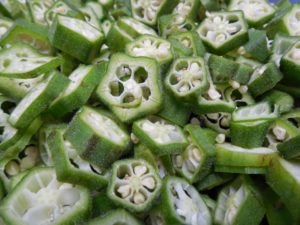 Given the wide range of positive health effects from mucilaginous foods, mucilage isn’t a definite no-no for a healthy, nutrient-dense diet! But, it’s worth noting that despite the glowing endorsements for this fiber, we may need to reduce or eliminate high-mucilage foods while we build an optimal gut microbiome or address a dysfunctional and overstimulated immune system. In most cases, these situations will be temporary, and we can eventually enjoy okra gumbo or cassava fries without worry!
Given the wide range of positive health effects from mucilaginous foods, mucilage isn’t a definite no-no for a healthy, nutrient-dense diet! But, it’s worth noting that despite the glowing endorsements for this fiber, we may need to reduce or eliminate high-mucilage foods while we build an optimal gut microbiome or address a dysfunctional and overstimulated immune system. In most cases, these situations will be temporary, and we can eventually enjoy okra gumbo or cassava fries without worry!
Citations:
Anderson E & Fireman M. “The mucilage from psyllium seed, plantago psyllium, L.” J. Biol. Chem. 1935;109:437-442.
Anderson E. & Lowe HJ. “The composition of flaxseed mucilage.” J. Biol. Chem. 1947;168:289-297.
Bacic A, et al. “Structural Analysis of Secreted Root Slime from Maize (Zea mays L.).” Plant Physiol. 1986 Mar;80(3):771-7.
Clifford SC, et al. “Mucilages and polysaccharides in Ziziphus species (Rhamnaceae): localization, composition and physiological roles during drought-stress.” J Exp Bot. 2002 Jan;53(366):131-8.
Dumitriu S. “Polymeric Biomaterials, Revised and Expanded.” 2nd ed. 2001: CRC Press. Page 485.
“E. coli (Escherichia coli).” Centers for Disease Control and Prevention. Accessed January 24, 2016.
Enzi G, et al. “Effect of a hydrophilic mucilage in the treatment of obese patients.” Pharmatherapeutica. 1980;2(7):421-8.
Frati Munari AC, et al. “Lowering glycemic index of food by acarbose and Plantago psyllium mucilage.” Arch Med Res. 1998 Summer;29(2):137-41.
Garrity G, et al., eds. “Bergey’s Manual of Systematic Bacteriology: Volume 2: The Proteobacteria.” 2nd ed. 2005: Springer.
Guevara-Arauza JC, et al. “Prebiotic effect of mucilage and pectic-derived oligosaccharides from nopal (Opuntia ficus-indica).” Food Science and Biotechnology. 2012 Aug;21(4):997-1003.
Innami S, et al. “Jew’s mellow leaves (Corchorus olitorius) suppress elevation of postprandial blood glucose levels in rats and humans.” Int J Vitam Nutr Res. 2005 Jan;75(1):39-46.
Jang CM, et al. “Effect of mucilage from yam on activation of lymphocytic immune cells.” Nutrition Research and Practice. 2007;1(2):94-99.
Köpke M, et al. “Clostridium difficile is an autotrophic bacterial pathogen.” PLoS One. 2013 Apr 23;8(4):e62157.
Sannasiddappa TH, et al. “The influence of Staphylococcus aureus on gut microbial ecology in an in vitro continuous culture human colonic model system.” PLoS One. 2011;6(8):e23227.
Xu Q, et al. “Levan (beta-2, 6-fructan), a major fraction of fermented soybean mucilage, displays immunostimulating properties via Toll-like receptor 4 signalling: induction of interleukin-12 production and suppression of T-helper type 2 response and immunoglobulin E production.” Clin Exp Allergy. 2006 Jan;36(1):94-101.

